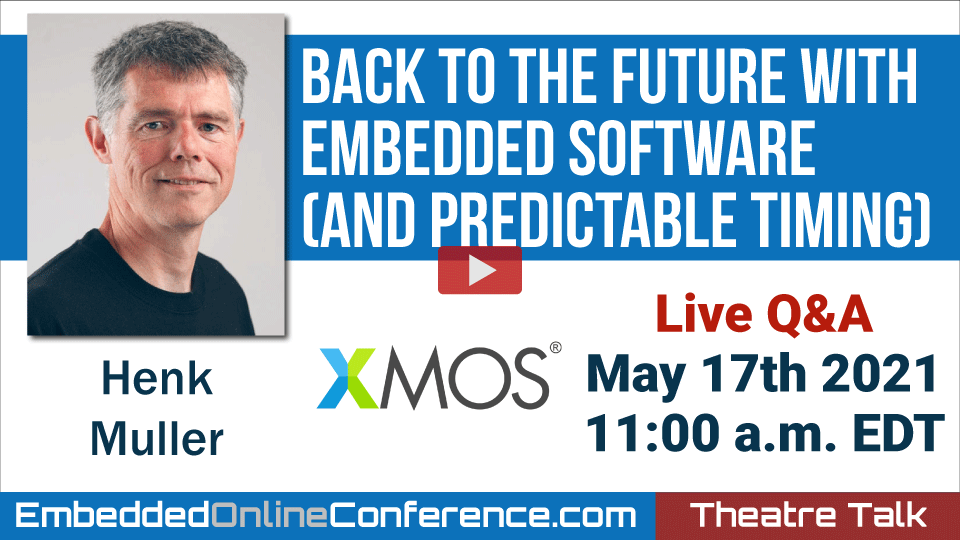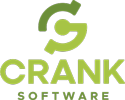Home > On-Demand Archives > Q&A Sessions >
Live Q&A - Back to the Future with Embedded Software (and Predictable Timing)
Henk Muller - XMOS - Watch Now - EOC 2021 - Duration: 24:08

Hi, a big bottleneck is memory access times. Thus, caches are traditionally used. How does XMOS deal with memory access time, is the internal 512kB RAM available to be read/written in 1 clock cycle?
Thank you for such an informative talk. When you say multiple (16 in this case) micros are used in a single chip, what about the power consumption and price increase for such an architecture. Also, as you mentioned caches were not used, I was little confused how memory synchronisation was taken care.
Hello Naveen, there are 16 logical cores, but these are implemented with just two physical actual cores. So pricing at volume is highly competitive. Each of the two physical cores has its own memory, and all eight logical cores in that physical core have single cycle access, so memory is effectively synchronised on a per-clock cycle basis.
Are interrupts still allowed with XCORE? It seems like there is no way around using interrupts to respond to external events. Thank you.
Thanks Henk for this intro. I've heard some good things about the "Transputer" from my "older" colleauges. I believe XMOS is a continuation of the Transputer? I am unfamiliar with the subject but it is facinating to learn that there is an alternative architecture to traditional micro-processor.
12:03:36 From Stephane Boucher : https://www.embeddedonlineconference.com/theatre/Back_to_the_future_with_embedded_software 12:12:06 From Erwin : Does this mean that during Debug Session you need one core for Debugging? 12:13:56 From Erwin : Thanks 12:14:04 From Radu Pralea : So, essentially, this approach (architecture) aims at making concurrency + real-time very simple & straight forward, but only as long as you have less processes than number of cores (which is reasonable in so many practical scenarios), isn't it? 12:18:17 From Matt Liberty : How does XMOS stack up to other architectures with compute power per Watt? 12:18:58 From Erwin : Also DevKits are a little bit out of stock Right now! 12:19:25 From 1 - Matthew Lai : Is the XMOS ISA similar to or quite different from RISC-V ISA? 12:21:26 From Matt Liberty : Yes. Thank you! 12:22:54 From 1 - Matthew Lai : Cool. Thanks. 12:23:03 From Radu Pralea : I remember such an approach back in the mid 2000s (I've even worked at a company that tried it): an array of simple but many cores: PicoChip. I've just googled, and XMOS and PicoChip seem to share some key people :) Could you comment, please? (also about the fact that after the acquisition (I think it ended with Intel acquiring Mindspeed) I've never heard of this architecture? 12:23:45 From Radu Pralea : indeed 12:24:23 From Radu Pralea : Thanks 12:24:23 From Keith J : Thank you Henk 12:24:31 From Ian Ross : Thanks, Henk! 12:24:36 From Steve Wheeler : Thank you. 12:24:51 From Carlos Amaya : Thank you 12:24:55 From RonCollinson : Cheers, Henk 12:25:03 From Erwin : Thanks a lot, interresting approach!

























Are there trace techniques for bare metal functions/tasks?
How is interrupt tracing handled, and what is the overhead for this?